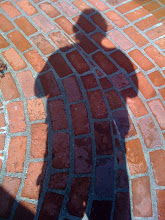
I see a palm trees everyday. There are roughly 2600 spieces of Arecaceae, but not that many varieties in Los Angeles. Like the wait staff of many restaurants seeking fame in Hollywood, the palm trees aren’t even from Los Angeles. They were brought here 100 years ago or more from Latin America and other exotic lands. That was only a beginning. Hundreds of Mexican Palms, which look a lot like the Canary Island Date Palm and were planted throughout the modest neighborhoods of south Los Angeles to herald the 1932 Olympics, and are still thriving. Los Angeles is full of them. Local officials really don’t care for them. They look good on post cards and because they have become the universal sign for vacation the tourism boosters are big supporters, but those with a more practical point of view disagree. Their tall, bare trunks make them inferior when it comes to providing shade, and their scant leaves make them less effective at trapping air pollution. Stand next to an oak tree, feel the shade. Stand next to a palm tree or stand next to a telephone pole…no difference. The yearly clean up cost for palm trees in Los Angeles is about $350,000, but to really maintain them the right wat would cost upwards of $385,000. Its hard to predict their future in Los Angeles. The city doesn’t replace a palm that succumbs to fungal disease or those that grow into the power lines and are removed overnight, with another palm. You get a magnolia, maybe a jacaranda, . Twenty Five year ago I purchased four five gallon palms. One still is potted and is of somewhat manageable size. The other three, they went into the ground. Out of those three two were cut down by The Los Angeles Department of Water & Power (into the lines) the other one is amazingly tall and must be professionally pruned each year of the little date nuts that form in the stratosphere. Frankly I could do without the palms. But a worthless tree? In the age of supermarkets, hardware and clothing stores I guess they are low on the scale. But this wasn’t the case in the mid 19th century. Read what travel writer Herman Melville wrote in 1846 about the cocoa nut palm tree.
“ The blessings it confers are incalculable. Year after year, the islander reposes beneath its shade, ( OK I know the shade, but in there never have been many oak groves in the Polynesian chain) both eating and drinking of its fruit; he thatches his hut with its boughs, and weaves them into baskets to smaller ones , with bowls for his pipes, the dry husks kindle his fires; their fibres are twisted into fishing lines and cords for his canoes; he heals his wounds with a balsam compounded from the juice of the nut, and with the oil extracted from its meat embalms the bodies of the dead.
The noble trunk itself is far from being valueless. Sawn into posts, it uphold the islander’s dwelling; converted into charcoal, it cooks his food; and supported on blocks of stone, rails in his lands. He impels his canoe through the water with a paddle of the wood, and goes to battle with clubs and spears of the same hard material.
In pagan Tahiti a cocoa-nut branch was the symbol of regal authority. Laid upon the sacrifice in the temple, it made the offering sacred; and with it the priests chastised and put to flight the evil spirits, which assailed them. The supreme majesty of Oro, the great god of their mythology, was declared in the cocoa-nut log from which his image was crudely carved. Upon one of the Tonga Islands, there stands a living tree revered itself as a deity. Even upon the Sandwich Islands, the cocoa-palm retains all its ancient reputation; the people there thought of adopting it as the national emblem.”
Obviously The Los Angeles City Council doesn’t see eye to eye with Melville’s thoughts as he contemplated the story of the great white, but they do have a point of view. Do we lose our iconic palm tree, is the symbol of Los Angeles destined to morph into a jacaranda? The world has changed and the palm’s values have died.








